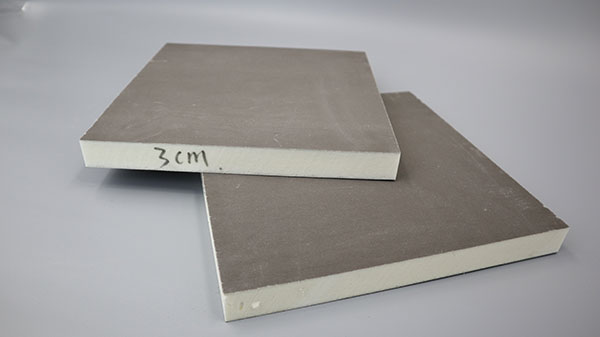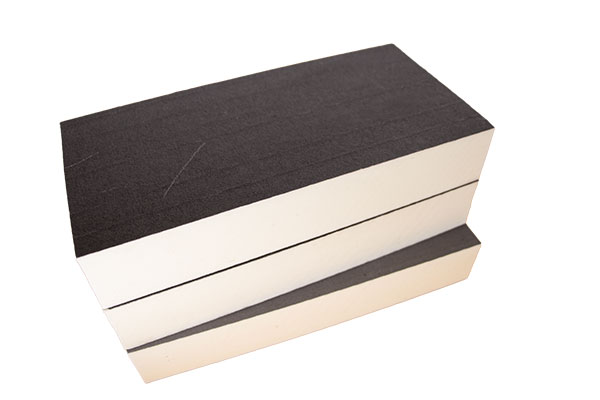Choosing the right insulation material dramatically impacts a building’s energy efficiency, structural durability, and long-term maintenance costs. Among high-performance insulation solutions, XPS (extruded polystyrene) そして PIR (polyisocyanurate foam) stand out—but their distinct properties make them suited for vastly different applications. For architects, contractors, or homeowners searching “XPS vs PIR,” this article cuts through the technical noise to provide a science-backed comparison of thermal performance, moisture resistance, structural strength, and real-world application scenarios.

1. Core Technical Properties: How XPS and PIR Perform Under Scrutiny
Thermal Performance and R-Value
PIR dominates in thermal efficiency with an ultra-low thermal conductivity of 0.020–0.025 W/m·K, delivering an outstanding R-value per unit thickness. This outperforms エックスピーエス (0.029–0.036 W/m·K), meaning PIR achieves the same insulation with thinner panels. For example, 100 mm of PIR can match 120–140 mm of XPS. This makes PIR ideal where space constraints exist, such as wall cavities or retrofits.
Moisture Resistance and Longevity
エックスピーエス features a closed-cell structure that resists water absorption (below 0.7% when fully submerged). This near-zero moisture uptake prevents thermal degradation in damp environments—critical for foundations, basements, or inverted roofs where insulation contacts soil or water. PIR, while moderately water-resistant, lacks comparable lab or field data for submerged or high-humidity applications.
Structural Strength and Stability
エックスピーエス provides superior compressive strength (300–700 kPa), supporting heavy loads in applications like driveways, industrial floors, or airport runways. PIR (compressive strength: 120–200 kPa) prioritizes lightweight thermal efficiency over structural support.
Table: Key Technical Properties at a Glance
| プロパティ | エックスピーエス | PIR |
|---|---|---|
| Thermal Conductivity (W/m·K) | 0.029–0.036 | 0.020–0.025 |
| Compressive Strength (kPa) | 300–700 | 120–200 |
| Water Absorption (%) | <0.7 | Moderate (varies by brand) |
| 耐火性 | Euroclass E (self-extinguishing) | B1 (difficult to ignite) |
| Temperature Range | -50°C to +75°C | -196°C to +130°C |
2. Application-Specific Recommendations: Matching Material to Use Case
Foundations, Roofs, and Below-Grade Applications
エックスピーエス is the undisputed choice for moisture-exposed zones:
- Foundations/Basements: Resists groundwater and soil moisture while supporting backfill loads.
- Inverted Roofs: Performs reliably when installed above waterproofing membranes.
- Freeze-Thaw Resilience: Retains >90% strength after 300 freeze-thaw cycles, making it viable for cold climates.
Walls, Cavities, and High-Temperature Settings
PIR excels where maximum thermal resistance is non-negotiable:
- Wall Insulation: Higher R-value per inch minimizes wall thickness loss.
- Commercial/Industrial Roofs: Withstands temperatures up to +130°C without degrading—ideal for factories or HVAC-adjacent zones.
- Fire-Sensitive Areas: Achieves superior fire ratings (e.g., B1) compared to standard XPS.
Pitfalls to Avoid
Using XPS in ventilated façades risks condensation due to low vapor permeability (“wall breathability”).
PIR’s lower compressive strength disqualifies it from load-bearing floors or green roofs.
3. Durability, Environmental Impact, and Cost Analysis
Long-Term Performance
エックスピーエス: Maintains stable R-value over decades but may lose up to 33% compressive strength after extreme freeze-thaw cycling.
PIR: Superior thermal stability long-term but requires protective cladding against UV and physical damage.
Eco-Friendliness and Circularity
エックスピーエス: Often incorporates recycled content (20–30%). Fully recyclable but rarely recovered post-use.
PIR: Limited recyclability but contributes to lower operational carbon via energy savings. Blowing agents vary in global warming potential.
Cost Implications
エックスピーエス: $0.30–$0.50 per board foot. Higher for high-density grades.
PIR: $0.45–$0.70 per board foot. Premium justified by thermal performance.
Which Insulation Should You Choose?
Opt for XPS If:
- Moisture resistance is critical (foundations, basements, roofs).
- High compressive strength is needed (floors, driveways).
- Budget constraints exist, yet durability is essential.
Choose PIR If:
- Maximizing R-value in limited space is key (walls, retrofits).
- Fire safety or high-temperature stability is required (commercial roofs, HVAC).
- Sustainability goals prioritize long-term energy savings over upfront cost.
There’s No Universal “Winner”
The XPS vs PIR debate hinges on specific project variables. エックスピーエス delivers unmatched durability in wet/load-bearing environments, while PIR offers unbeatable thermal efficiency where space or fire safety matters. Assess your project’s exposure to moisture, structural demands, thermal targets, and budget—this will clarify whether XPS’s robustness or PIR’s insulation prowess takes priority. In complex builds, hybrid systems (e.g., XPS below-grade + PIR in walls) often yield optimal results.

